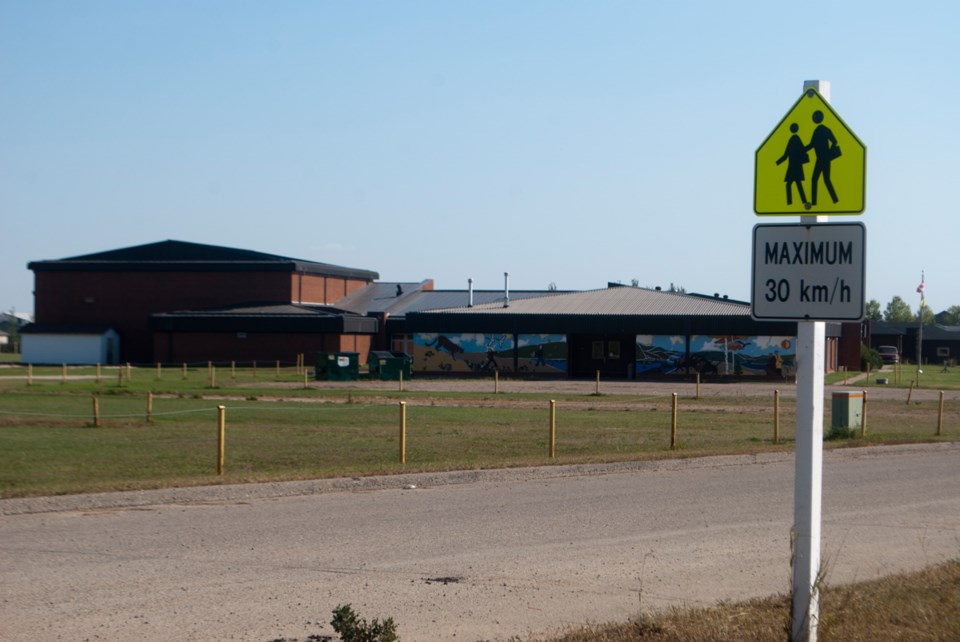School is back in session with Sept. 5 being the first day for youth and with school starting up a reminder to slow down in school zones and abide by the proper rules of the road – which should always be done – becomes quintessential in school zones.
           In general the major traffic offences the RCMP deal with which can result in injuries and collisions are speed, distracted driving, failing to use seatbelts, and intersection related offences such as failing to stop or yield accordingly.
           Although these are all terrible and can result in injuries and collisions at anytime it becomes pertinent for the driver to be aware of their surroundings when driving by a school where youth may not always be watching for vehicles.
           Obeying traffic signs is important for the safety of everyone. Often drivers are annoyed at having to slow down while passing through school zones with speeds ranging from 25 km/hr in Arcola to 30 km/hr in Carlyle and Manor for example.
           Slowing down through these zones is extremely important as youth may be taught to look both ways before crossing the street; but, often young people may forget causing them to dart out into the street after a ball during recess or are hidden behind parked vehicles until they step out into the street.
           Drivers need to be alert and prepared to stop for this reason as the force of a collision, even if travelling 30 km/hr can cause severe injuries to a pedestrian. As recorded by CBC travelling at 40 km/hr creates a force of 70 percent more than 30 km/hr, while travelling 50 km/hr creates 180 percent more force than the typical 30 km/hr.
           The Observer performed calculations, cross referencing numbers with an article from CBC, to find travelling across 200 metres of school zone at the recommend speed of 30 km/hr only takes 24 seconds. At 25 km/hr the same 200 metres takes 25 seconds, while 40 km/hr achieves a time of 18 seconds and 50 km/hr results in a time of 15 seconds.
           Though the time difference is minimal in the big picture, people often complain of having to slow down to such speeds through the zones. However, the difference in time it takes to stop could mean a life. At 25 km/hr a vehicle will take three and a half metres to make a complete stop. While travelling 30 km/hr it takes a typical vehicle five metres to a complete stop, at 40 km/hr it takes nine metres to stop, and 50 km/hr takes 14 metres to come to a complete stop. This information was obtained through Forensic Dynamics Inc. which specializes in accident reconstructions. They provide a "Stopping Distance Calculator" on their website able to generate the approximate distance needed to stop based on speed and altered by road conditions.
           Fines for speeding through a school zone begin at $210 and increase for every kilometre over the limit.
           Additionally, it is necessary to practice diligence when approaching a school bus either loading or unloading students. When a school bus has its stop arm out and lights flashing drivers, approaching from either the rear or the opposite direction, must stop.
           "The single greatest threat to the safety of children who ride school buses is motorists who pass the bus when children are loading and unloading," the Saskatchewan Driver's Handbook reads.
           Instructions from the handbook follow: stipulating you are to stop at least five metres (15 feet) from the bus. Vehicles are to remain stopped until the stop arm is retracted and the flashing lights are turned off. Passing a school bus with its warning lights and stop arm out is considered a serious offence, which will result in a fine of $360.
           The only instance where people on the same road as the bus may continue travelling is if the bus has stopped on a divided highway and you are travelling in the opposite direction, otherwise vehicles travelling behind are required to stop.
           Distracted driving is also a concern, whether high school students driving while on their phone or parents checking messages on their phones, all ages need to remember to pay attention while driving. Fines for driving with undue care and attention are $280.
           In relation to driving while distracted ensuring the driver and all passengers are wearing seatbelts is essential. Children can be especially difficult in vehicles wanting to move around excessively in the car. This can become a distraction to the driver, while it is also a safety precaution required to be worn in vehicles. The fine for not wearing a seatbelt is $175.
           School intersections are all-way stops and failing to stop at any stop sign comes with a fine of $230.
           Also ensure you’re abiding by the various parking signs surrounding schools as well to ensure safety of all involved.
           So, continue to be safe on the road and remember to pay special attention in school zones.




